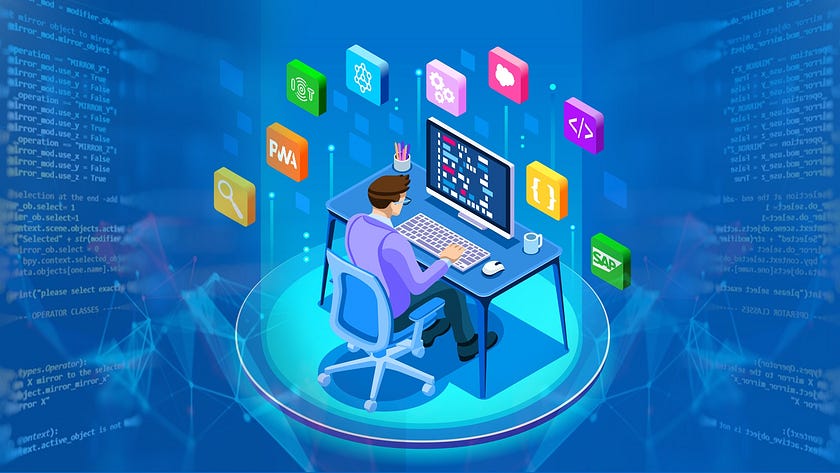Application Development Companies: How do they work?

In today’s tech-driven world, application development has become essential for businesses seeking to connect with customers, streamline operations, and innovate within their industries. Whether it’s a mobile app, a web app, or a customized enterprise solution, the demand for skilled development teams is higher than ever. But how exactly do application development companies work? This blog will take you through the key processes, models, and roles that enable these companies to transform ideas into fully functional applications.
1. Initial Consultation and Discovery Phase
The first step in the application development process is understanding the client’s vision, requirements, and objectives. During this discovery phase, the development company collaborates with the client to outline:
- Project Goals: Identifying the primary objectives the app should accomplish.
- Target Audience: Determining who will use the application and tailoring features to meet their needs.
- Budget and Timeline: Setting realistic expectations for project cost and delivery.
- Technical Requirements: Discussing necessary platforms, integrations, and technology stacks.
This phase often involves business analysts, project managers, and developers who work together to clarify and document project requirements, forming a clear roadmap for development.
2. Planning and Prototyping
After the initial consultation, the company develops a more detailed project plan. This phase includes:
- Project Scope Definition: Listing all features and functionalities the application will support.
- Wireframing and Prototyping: Creating visual blueprints (wireframes) and sometimes interactive prototypes to help clients visualize the product.
- Technical Architecture: Planning the application’s underlying framework, database structures, and front-end and back-end systems.
Prototyping helps clients see early versions of the app and make any necessary adjustments before development begins. This saves time and resources by preventing costly changes in later stages.
3. Development and Coding
The actual coding phase is the core of the application development process. Companies typically use one of the following development approaches:
- Waterfall Model: A linear approach where development proceeds sequentially from planning to deployment.
- Agile Model: A flexible, iterative approach where development is broken down into “sprints.” Each sprint delivers a segment of the project, allowing clients to give feedback and make changes along the way.
During development, teams focus on front-end (user interface and experience) and back-end (server, database) tasks. Quality assurance specialists are also involved to ensure the code meets standards and functions correctly.
4. Testing and Quality Assurance
Testing is a critical phase in application development. Quality assurance (QA) teams use various testing methods to detect and fix any issues. Common testing types include:
- Functional Testing: Ensuring each feature functions as intended.
- Performance Testing: Measuring the application’s speed and scalability under different conditions.
- Security Testing: Checking for vulnerabilities to ensure the app is secure.
- User Acceptance Testing (UAT): Having real users test the app to confirm it meets their needs and expectations.
This phase helps ensure the app functions smoothly and can handle real-world usage before launch.
5. Deployment and Launch
After rigorous testing, the application is ready for deployment. The deployment process includes:
- Server Setup: Configuring servers, databases, and other necessary infrastructure.
- App Store Guidelines Compliance: Ensuring that mobile apps meet the requirements of app stores (like Apple App Store and Google Play).
- Launch Strategy: Developing a plan for release, which may include phased rollouts to mitigate potential issues.
At this stage, the company often provides client support to monitor the app’s performance and address any immediate concerns post-launch.
6. Post-Launch Support and Maintenance
Application development companies often provide ongoing maintenance and support. This may include:
- Bug Fixes and Updates: Resolving any issues that arise after launch and updating the app with new features.
- Performance Monitoring: Tracking app performance metrics and optimizing functionality over time.
- User Feedback Integration: Collecting feedback from users and making adjustments to enhance the app experience.
Continuous improvement is essential for maintaining user satisfaction and keeping the app aligned with business goals as market trends evolve.
How Application Development Companies Structure Their Teams
Different specialists work together to ensure the app development process is smooth, efficient, and productive. Here are some key roles involved:
- Project Managers: Oversee the project, ensure timelines are met, and communicate between clients and development teams.
- Business Analysts: Help define project requirements and align them with business goals.
- Developers: Responsible for coding, building, and maintaining the app’s functionality.
- Designers: Create the visual layout and user interface of the application.
- Quality Assurance Testers: Conduct testing to ensure the application is bug-free and meets quality standards.
- DevOps Engineers: Manage infrastructure, deployment, and monitor the performance post-launch.
Conclusion
Application development companies play a crucial role in translating business ideas into digital solutions. By following a structured yet adaptable process, these companies help clients realize their goals through tailored, high-quality applications. From the initial consultation to post-launch support, a well-organized application development company ensures a seamless journey from concept to completion, allowing businesses to stay competitive and engage users effectively in the digital landscape.


Comments
Post a Comment